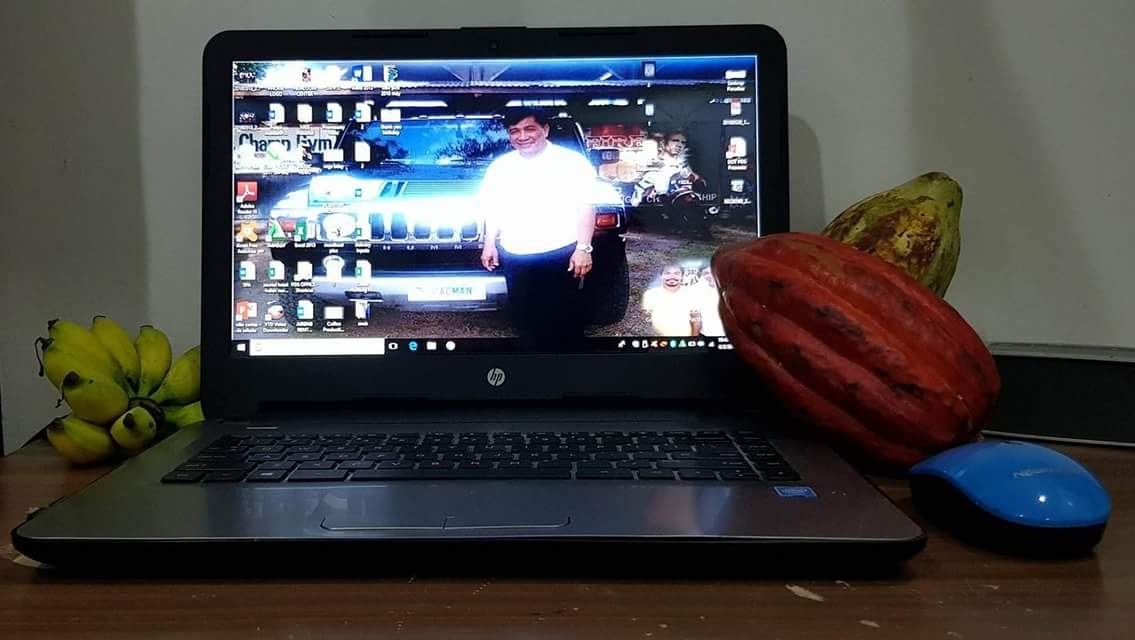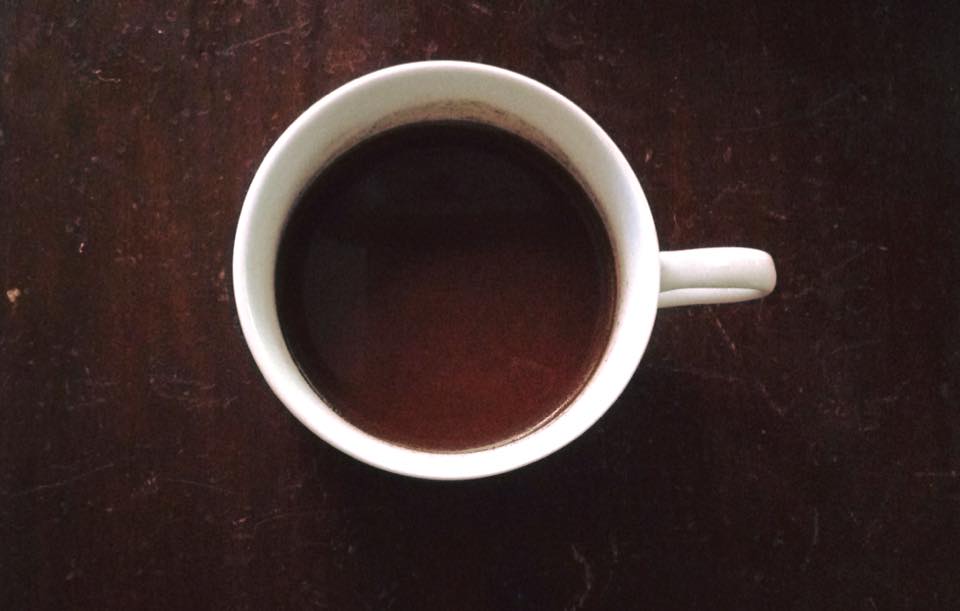 A month ago, the Zambales Governor opened his doors to PDS to save the idle lands and bring prosperity to its townsfolk.
A month ago, the Zambales Governor opened his doors to PDS to save the idle lands and bring prosperity to its townsfolk.
 Here is Sec. Piñol and his thoughts on how to uplift the lives of our tribal families.
Here is Sec. Piñol and his thoughts on how to uplift the lives of our tribal families.
———————-
‘Millionaires in 5 years’
PRES. DUTERTE OKs LIVELIHOOD SCHEME
FOR 20,000 IP FAMILIES IN TRIBAL LANDS
By Manny Piñol
President Rody Duterte approved during the Cabinet Meeting on Monday a livelihood program designed by the Department of Agriculture (DA) which is aimed at turning 20,000 IP families in Ancestral Lands into “millionaires” in five years.
The program, Kabuhayan At Kaunlaran ng Kababayang Katutubo or 4Ks, is mainly an agriculture program focused on the development of Ancestral Lands into Tree Farms with other profitable crops such as Cacao, Coffee, Abaca and Black Pepper as secondary products.
The 4Ks is culture-sensitive program which will only be introduced to the IP Communities after exhaustive consultations.
For people to fully appreciate the context of the 4Ks, I am sharing here the text of my presentation of the program to the President and the other members of the Cabinet last Monday.
“KABUHAYAN AT KAUNLARAN
NG KABABAYANG KATUTUBO
A Livelihood and Agrkcultural Productivity Program
In the Ancestral Domains of the Indigenous People
Presented by Manny Piñol
Secretary of Agriculture
The Kabuhayan at Kaunlaran ng Kababayang Katutubo or 4Ks is a program inspired by the vision of President Rody Duterte to finally lift the Indigenous People of the country from poverty by developing their Ancestral Domain Claims through productive endeavours.
The 4Ks will be a collaborative effort of the following agencies:
1. Office of the President – to provide direction and guidance
2. Department of Agriculture – to design and fund agricultural and livelihood programs
3. National Commission on the Indigenous People – to link agencies with the IP groups
4. Dept. of Environment and Natural Resources – to assist in tree farming program
5. Department of Agrarian Reform – to thresh out tenurial issues
6. Dept. of Social Welfare and Development – to ensure membership in 4Ps of all 4K participants
7. Dept. of Trade and Industry – to link 4K beneficiaries to the market.
The 4Ks will be a culture-sensitive program which will introduce projects to which the IPs could easily adapt to.
These would include:
1. Tree Farming
2. Coconut Farming
3. Planting of Cacao, Coffee, Abaca or Black Pepper as intercrops in the Tree Farms
4. Raising of native pigs and free ranged chicken
5. Dairy Farming using Dairy Goats where the milk produced will be used in a feeding program for IP children.
Methodology:
– NCIP to identify CADT holders
– OP/DAR to assist in resolving tenurial issues of CADT holders
– DA to gather CADT holders in workshop to identify activities ideal for their areas
– DENR to provide Falcata or Gemelina seedlings
– DSWD to ensure that the families are supported by 4Ps
– DTI to arrange marketing agreement with pulp and paper or lumber firms for the marketing of the timber produced in the 4K areas.
Implementation
With the Dept. of Agriculture as the lead agency, each family in the Ancestral Domain will be asked to identify a 5-hectare area for his Tree Farm.
Through the Agricultural Credit Policy Council (ACPC), the DA, will implement a No-Interest, No-Collateral, Pay-Upon-Harvest loan program amounting to P300,000 for 5 hectares of Tree Farm with a 500-tree population per hectare.
The loan will be released on a monthly basis at P5,000 per month based on the assumption that the 4K Family will ensure that all 500 trees are growing and they will be given a monthly “maintenance” incentive of P2/tree. (Computation: 500 trees per hectare X P2 X 5 hectares)
In five years, the trees, when harvested are estimated to fetch a minimum of P2,000 each or an estimated gross income of P1-M per hectare or P5-M for the five hectares. Less his advanced “maintenance incentive loan” totalling P300,000, the 4K Program Participating Family is expected to earn at least P4-M.
Since Falcata and Gemelina are self-regenerating trees which grow saplings when harvested, the Tree Farm will be a sustainable and stable source of income for the Tribal People.
Additional Income Opportunities
Planting Cacao, Coffee, Black Pepper or Abaca under the Trees will be additional income sources for the 4K Families.
To sustain the families, the families could also be taught to raise native pigs and free range chicken while the women in the community to be established in the Ancestral Domain settlement could be taught to raise dairy goats whose production could be used in a milk-feeding program for the children in the communities.
Funding for these projects could initially come from the Dept. of Agriculture’s 2018 Budget for High Value Crops and Livestock. Additional funding could be included in the 2019 and succeeding budgets.
Initial Target Area: 100,000 hectares
Initial Target Participating 4K Families: 20,000
Initial Required Financing: P1.2-B for 2018 and P1.2-B every year thereafter until harvest on the 5th year.
Initial Target Date of Implementation: 2nd Quarter 2018
Expected Benefits:
– 4K Program is expected to turn 20,000 IP families into “millionaires” in five years;
– The program will result in the planting of 50-M trees in unproductive agricultural areas;
– The Program will dramatically increase the production of Coffee, Cacao, Abaca and Black Pepper;
– The Program will bring prosperity and peace in the tribal lands.
“Kung Gusto, Maraming Paraan’
Kung Ayaw, Maraming Dahilan!”
Peace, Progress and Prosperity in the Tribal Lands!”
With the approval by President Duterte of the 4Ks Program, the consultations with the IP communities will start in two weeks.
Four communities in four regions of Mindanao will serve as the pilot areas while other teams will be dispatched to other parts of the country to reach out to other IP groups like the Aetas of Zambales, the Dumagats of Sierra Madre, the Mangyans of Mindoro, the Ati of Panay and the tribal groups in the Cordillera, Cagayan Valley and Palawan.
 by Mel Santos
by Mel Santos
 A month ago, the Zambales Governor opened his doors to PDS to save the idle lands and bring prosperity to its townsfolk.
A month ago, the Zambales Governor opened his doors to PDS to save the idle lands and bring prosperity to its townsfolk. Here is Sec. Piñol and his thoughts on how to uplift the lives of our tribal families.
Here is Sec. Piñol and his thoughts on how to uplift the lives of our tribal families.
 A micro batch of Filipino Aromatico Fermented Dried Cacao Beans from Silay Highland Negros Occidental being prepared for shipment to Japan. Together with the very proud PDS farmer ‘Nong Dolping and Emmanuel Villarenia. ????
A micro batch of Filipino Aromatico Fermented Dried Cacao Beans from Silay Highland Negros Occidental being prepared for shipment to Japan. Together with the very proud PDS farmer ‘Nong Dolping and Emmanuel Villarenia. ????



 They are the little guys that spend minimal, but with the RIGHT and CORRECT Good Agricultural Practices (GAP) will be the sustainable force to uplift and improve the production of good-quality cacao products equal to other cacao-producing countries (African, South American and neighboring Indonesia, Papua New Guinea & Vietnam.)
They are the little guys that spend minimal, but with the RIGHT and CORRECT Good Agricultural Practices (GAP) will be the sustainable force to uplift and improve the production of good-quality cacao products equal to other cacao-producing countries (African, South American and neighboring Indonesia, Papua New Guinea & Vietnam.)








 BPI-NSIC Cacao Scion Trees Tagging of PEREGREEN Cacao Nursery, a PDS Affiliated Farm in Mintal, Davao City.
BPI-NSIC Cacao Scion Trees Tagging of PEREGREEN Cacao Nursery, a PDS Affiliated Farm in Mintal, Davao City. The members of Plantacion de Sikwate Cacao Producers Association, Inc. led by its Chairmain of the Board Cyrus Obsuna (3rd from right), national president, and Christopher Fadriga (3rd from left), paid a courtesy visit to Gov. Alfredo Marañon, Jr. (center) at the Capitol. In photo are Antonio Grafilo, Kenny Ang, Nelia Grafilo, PEMO Head, Atty. Wilmon Peñalosa, Boyet Uychiat, and Merceditas Montilla. /Capitol photo by Richard Malihan
The members of Plantacion de Sikwate Cacao Producers Association, Inc. led by its Chairmain of the Board Cyrus Obsuna (3rd from right), national president, and Christopher Fadriga (3rd from left), paid a courtesy visit to Gov. Alfredo Marañon, Jr. (center) at the Capitol. In photo are Antonio Grafilo, Kenny Ang, Nelia Grafilo, PEMO Head, Atty. Wilmon Peñalosa, Boyet Uychiat, and Merceditas Montilla. /Capitol photo by Richard Malihan